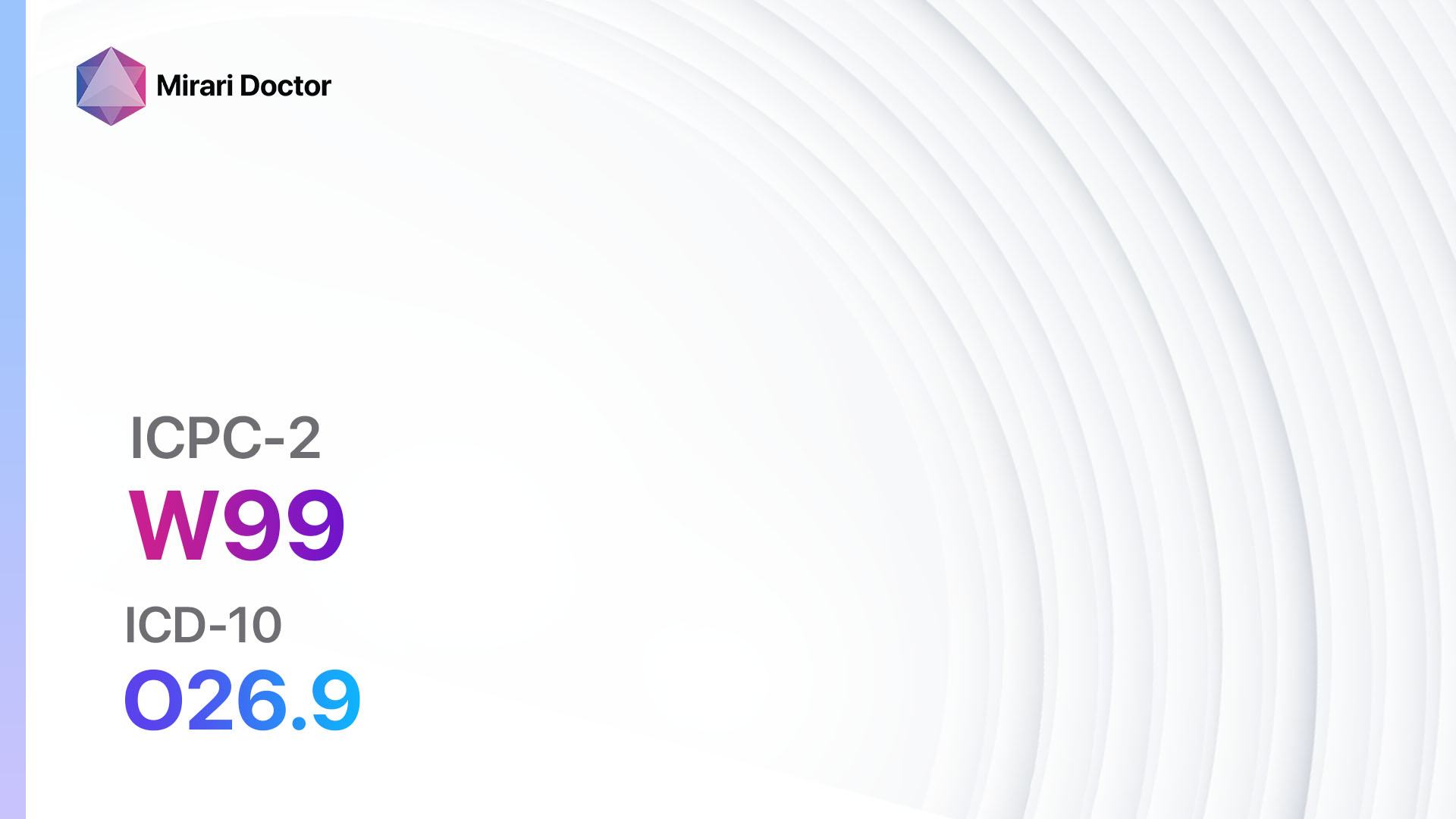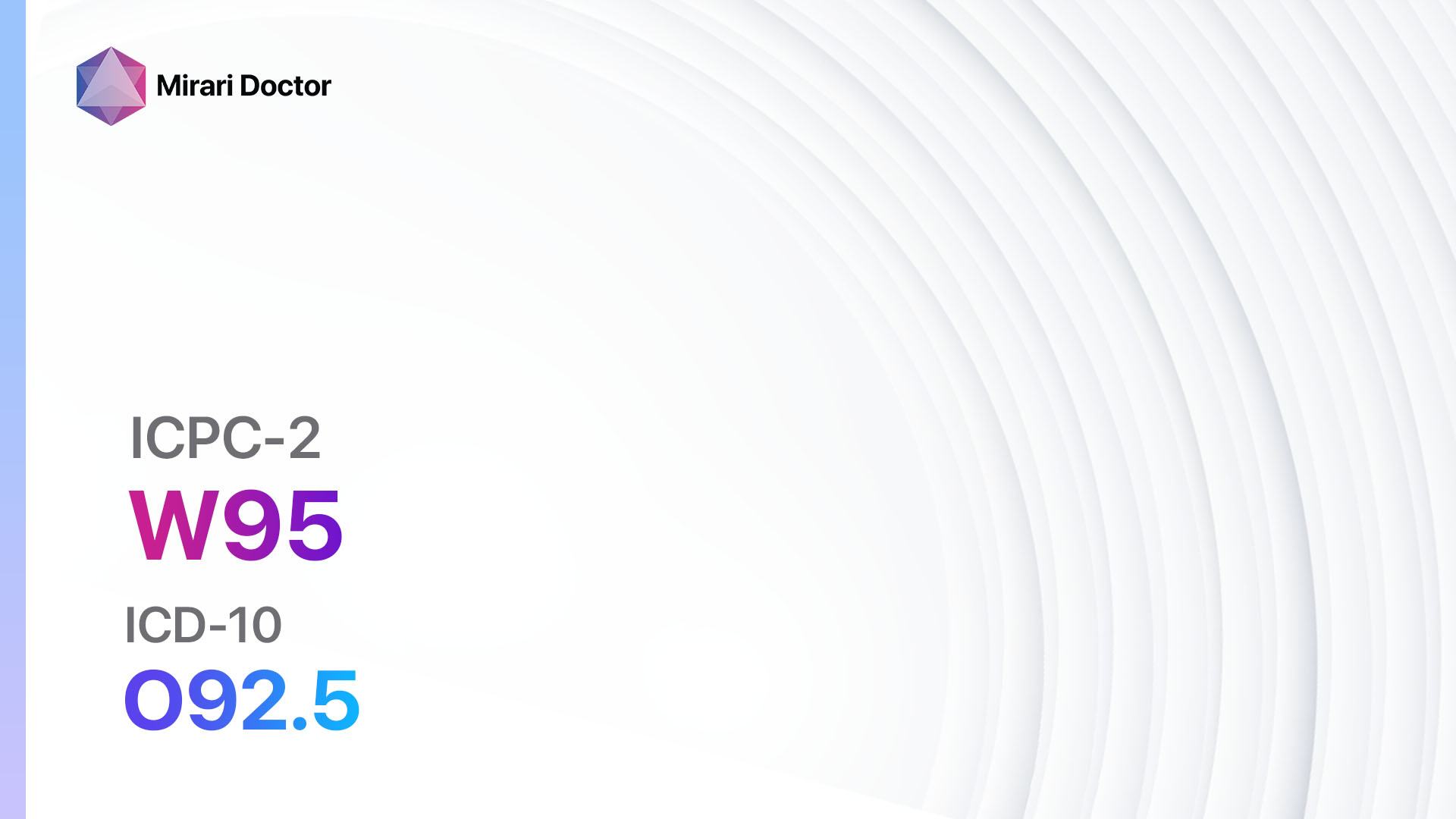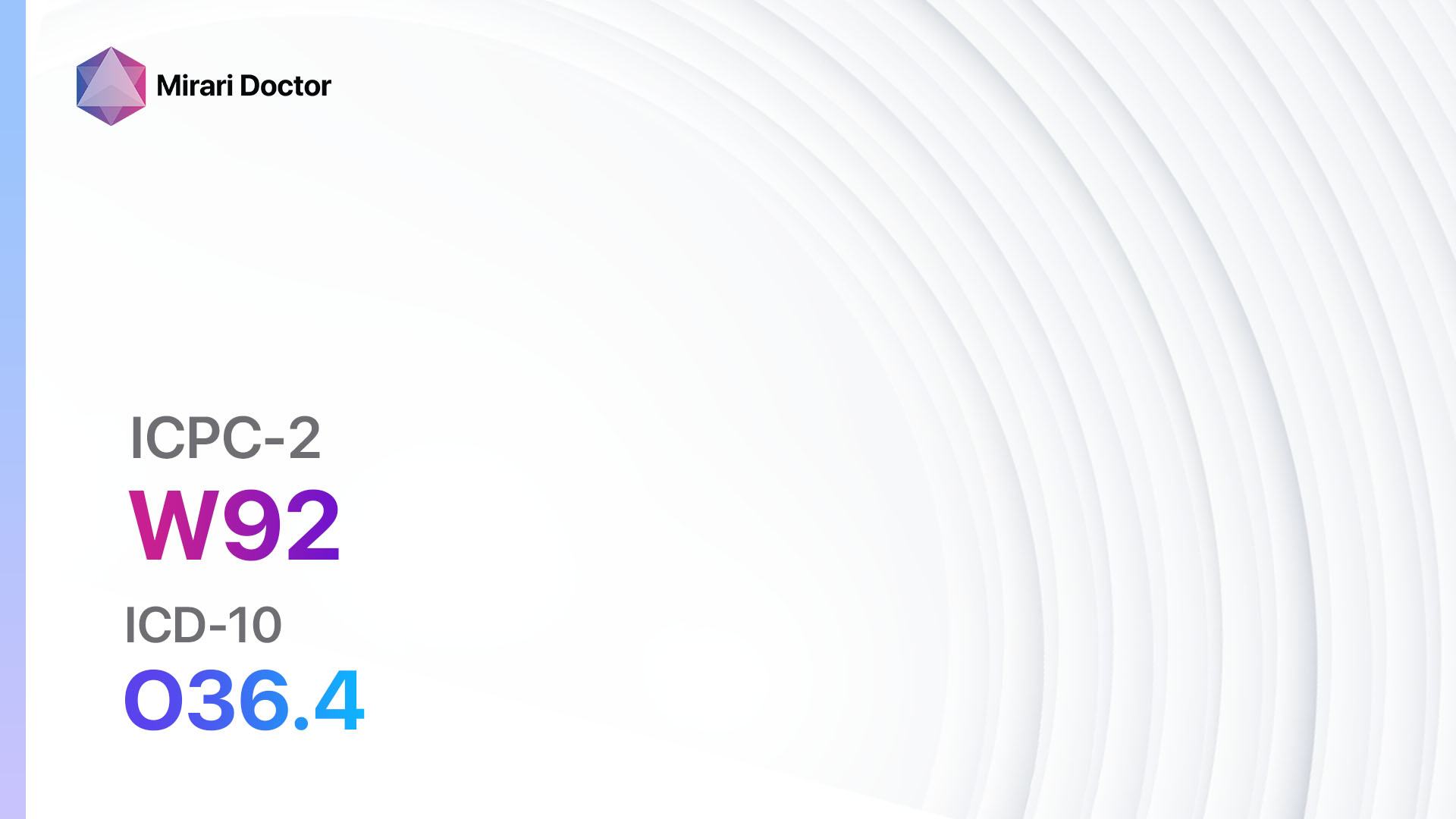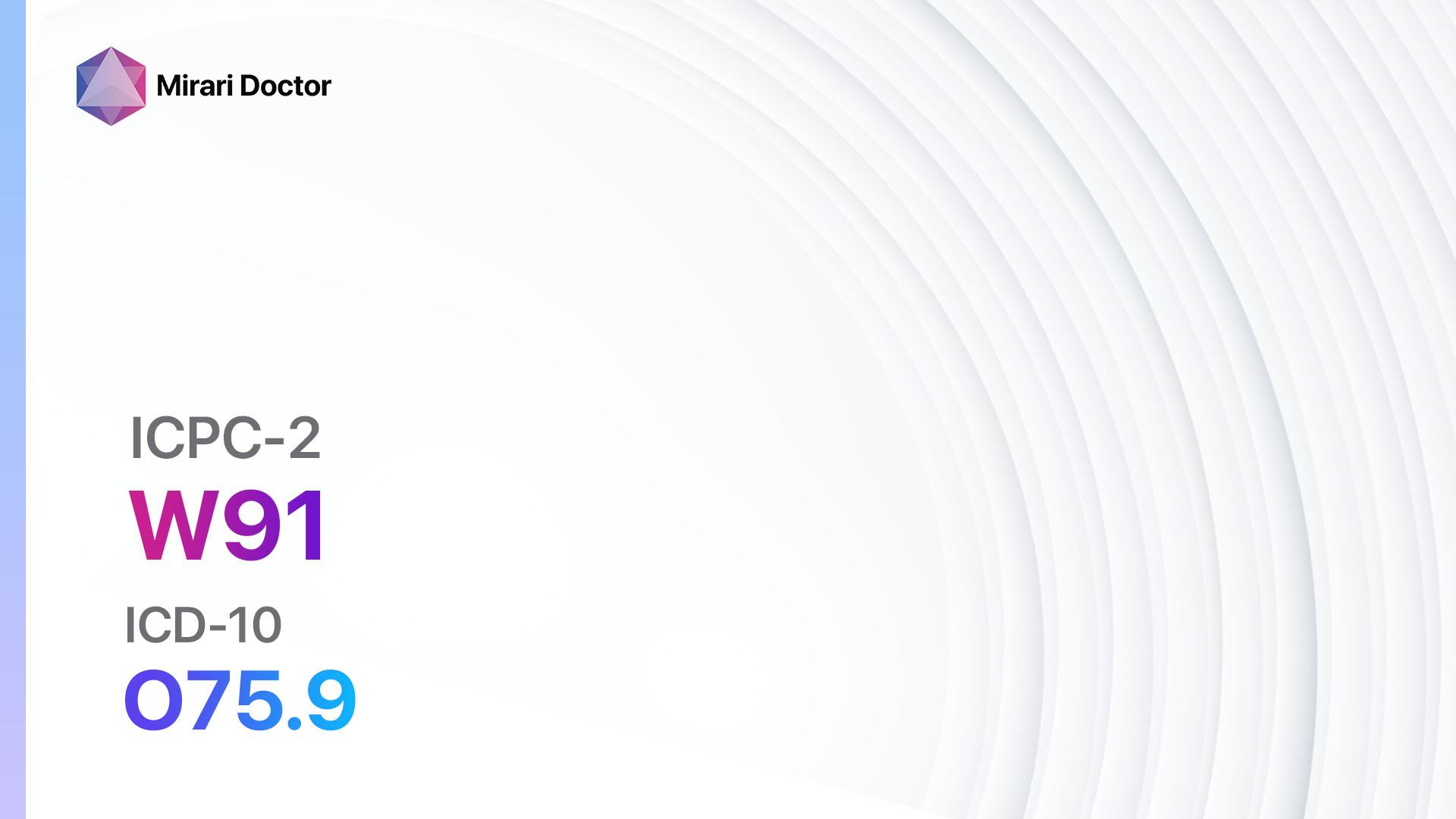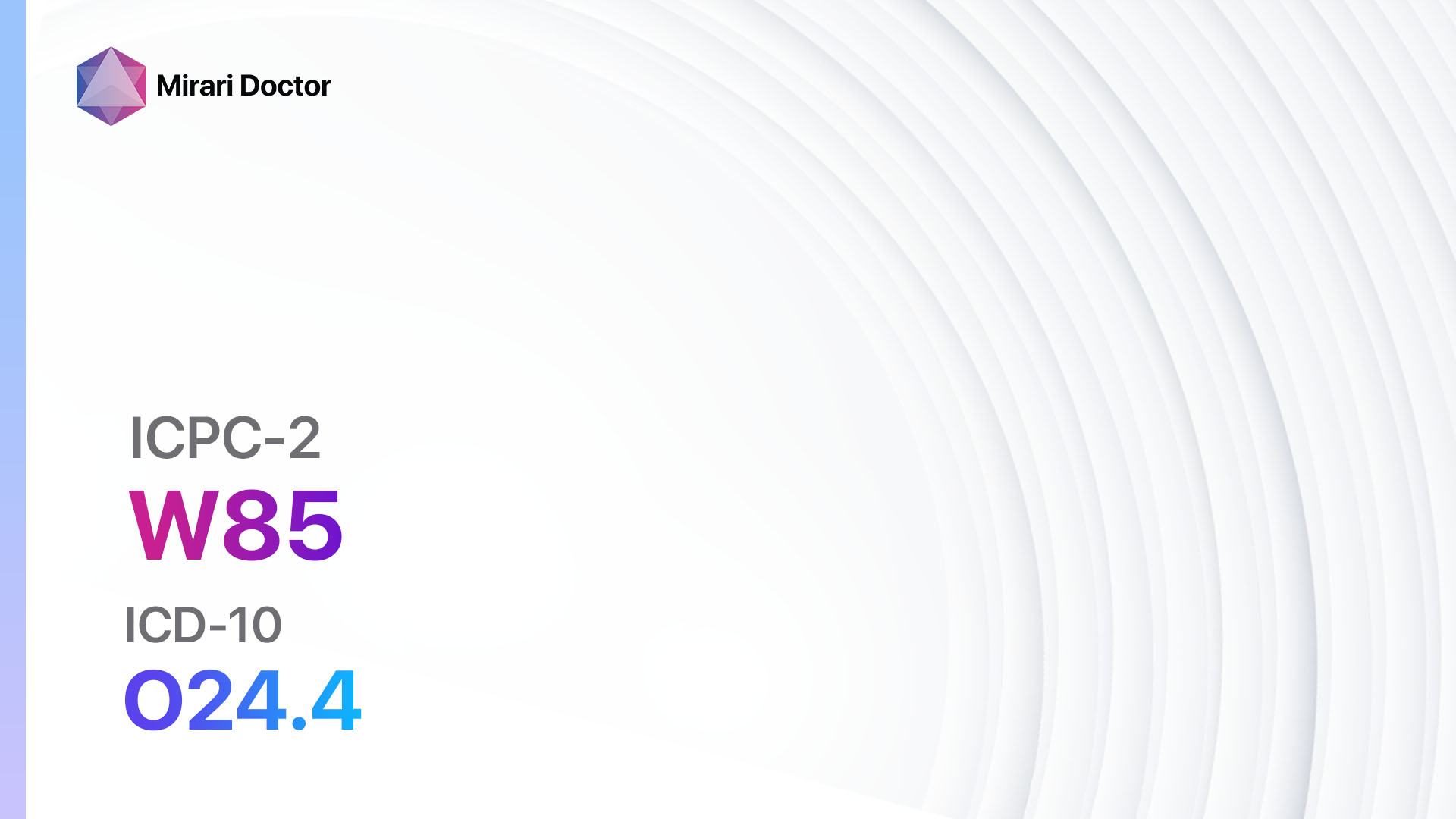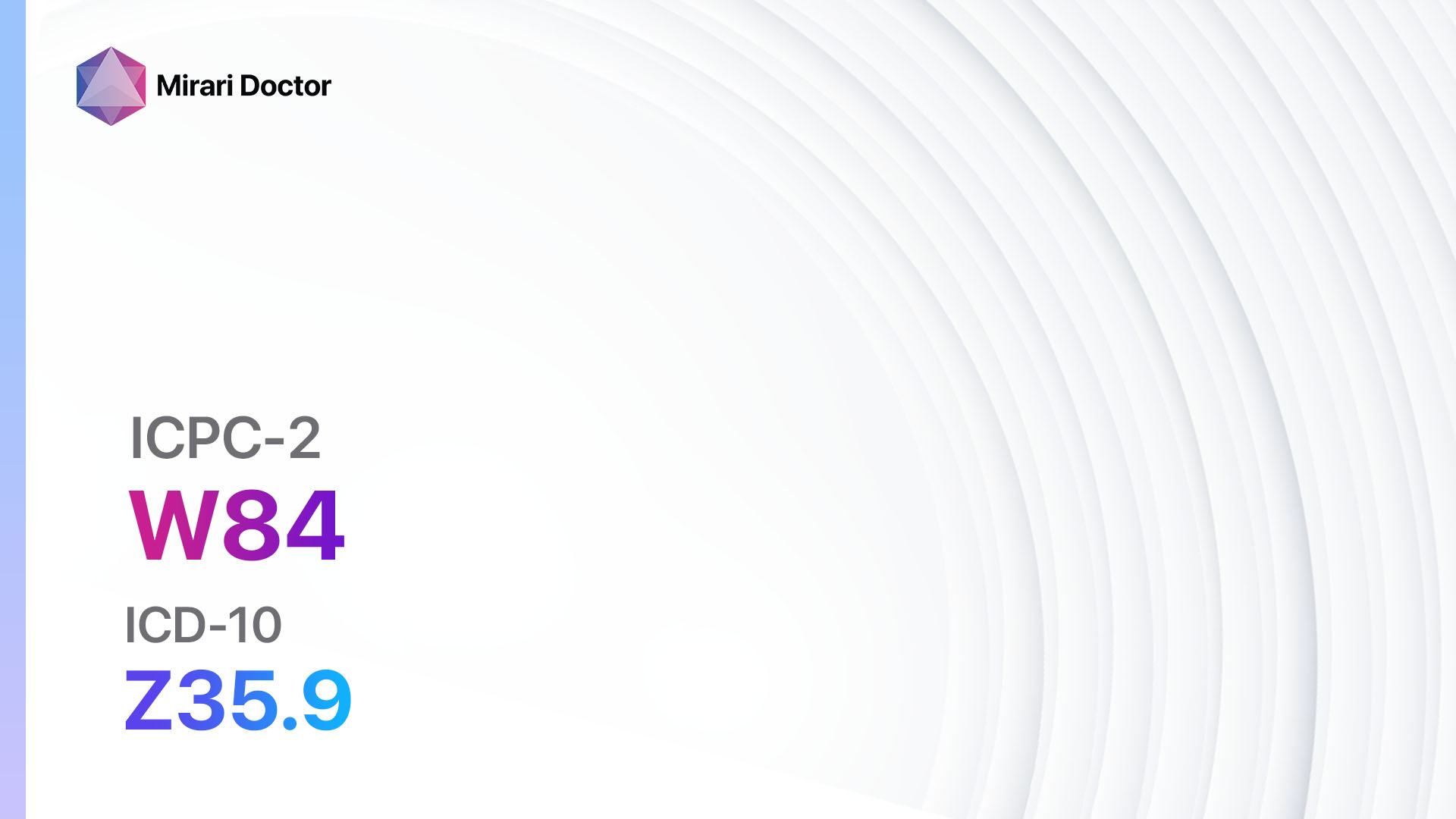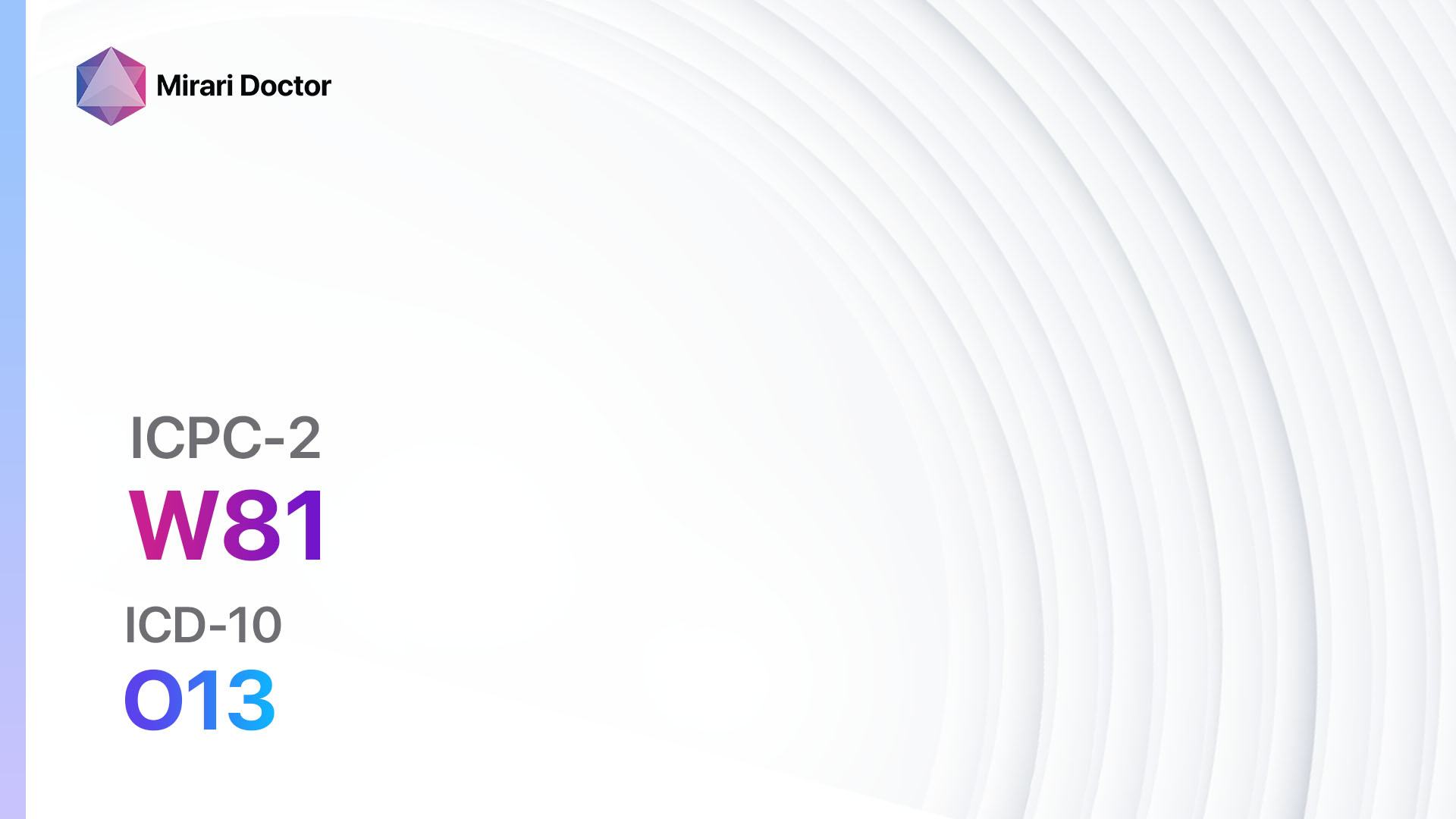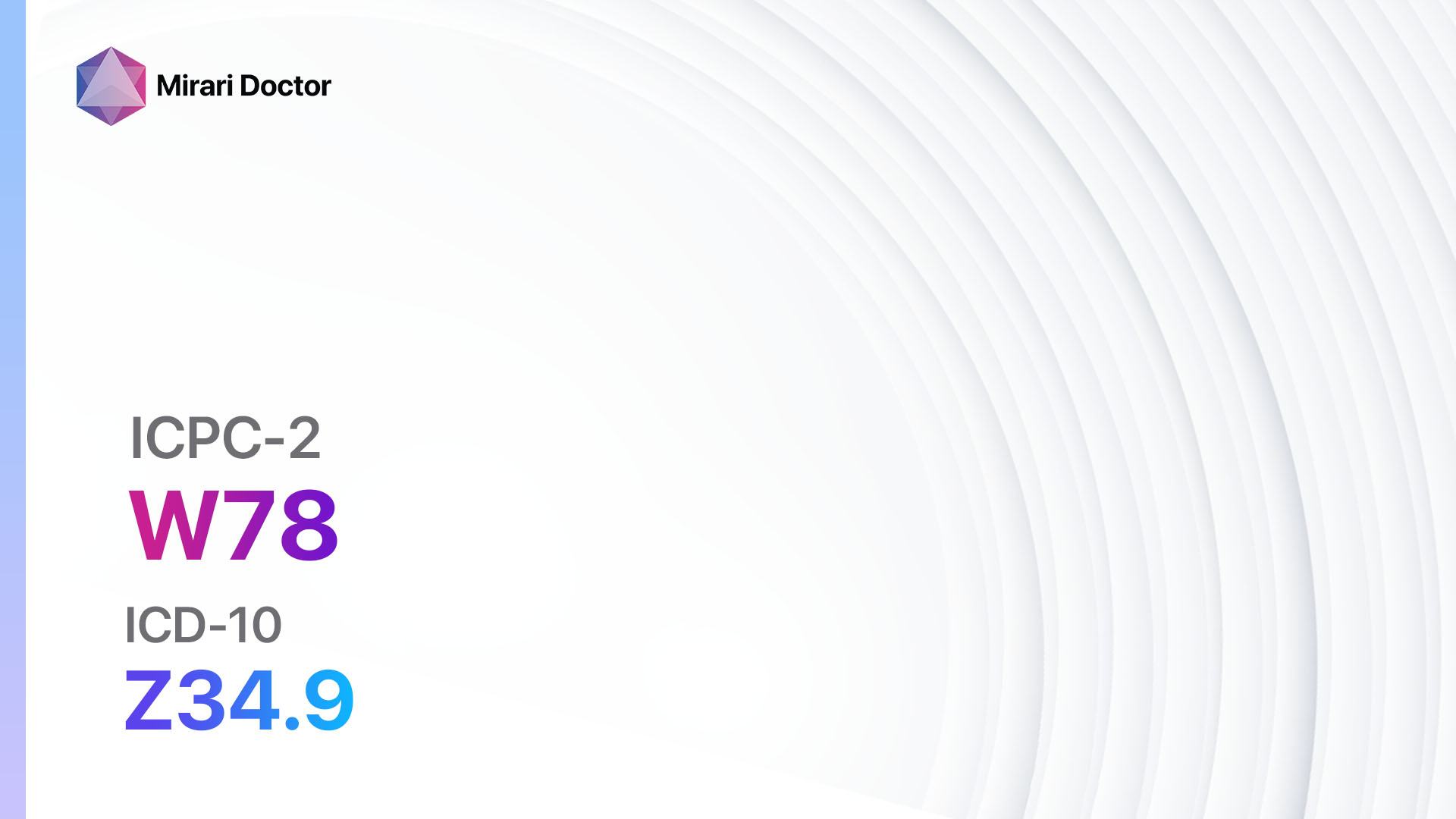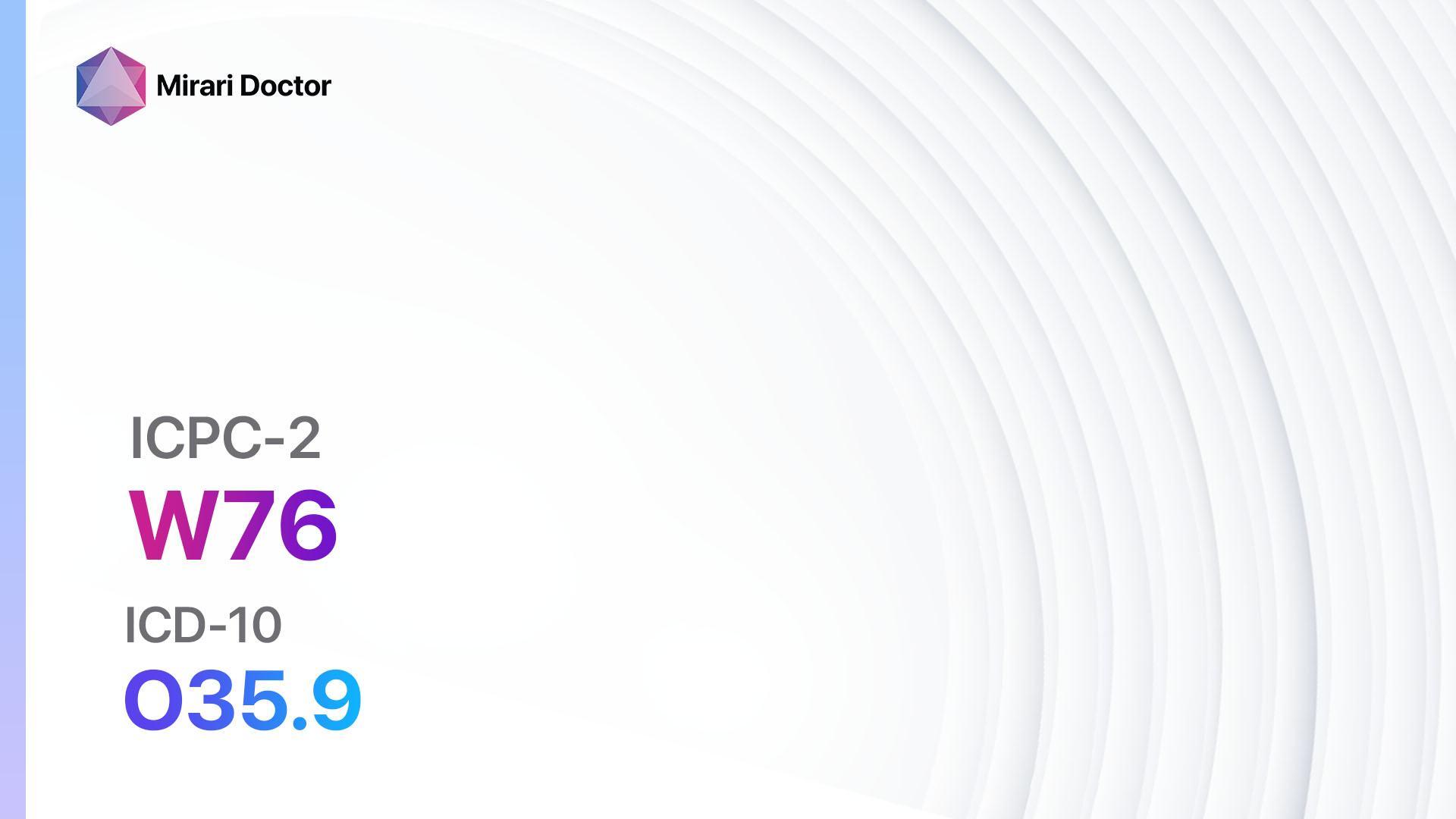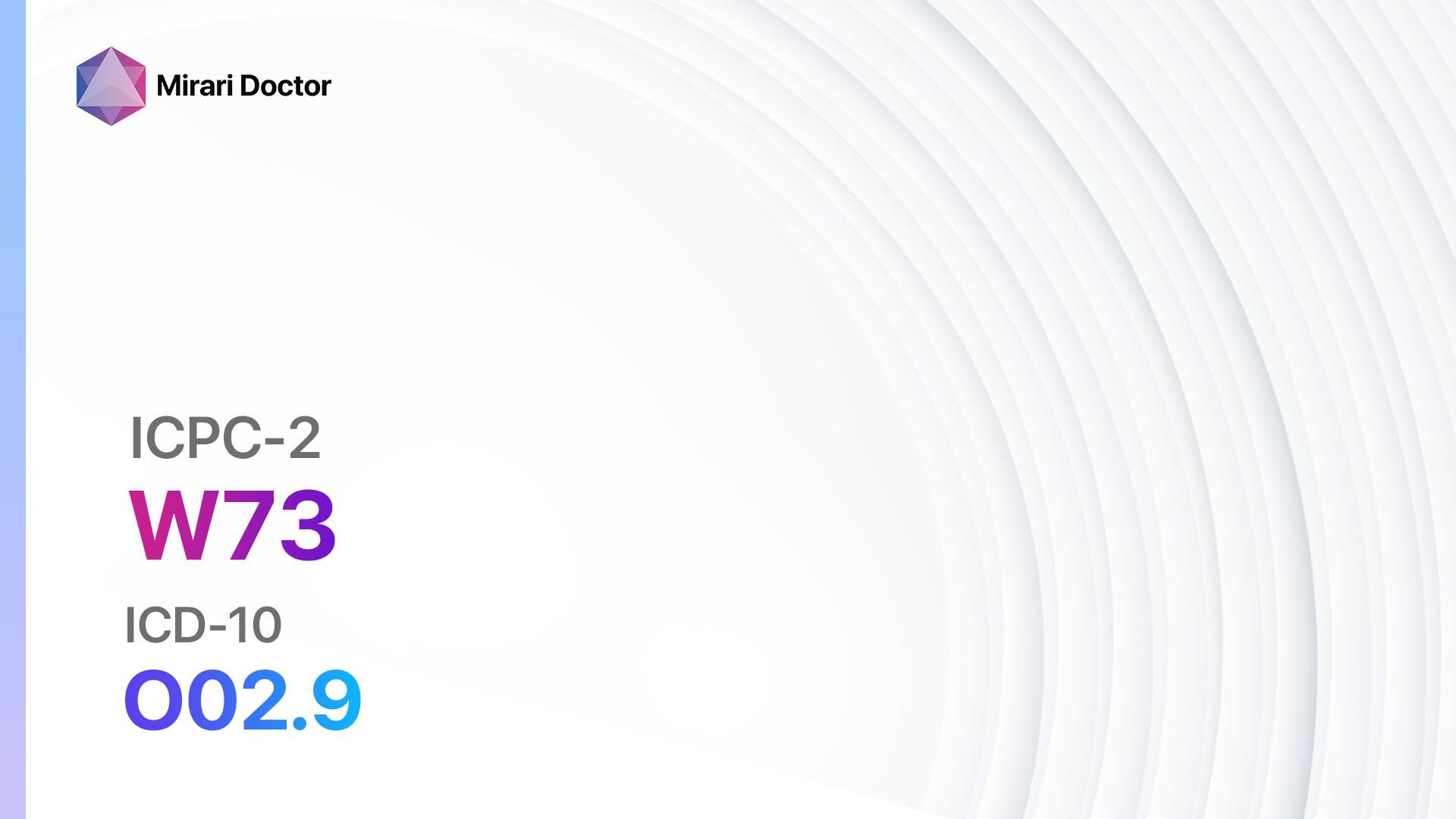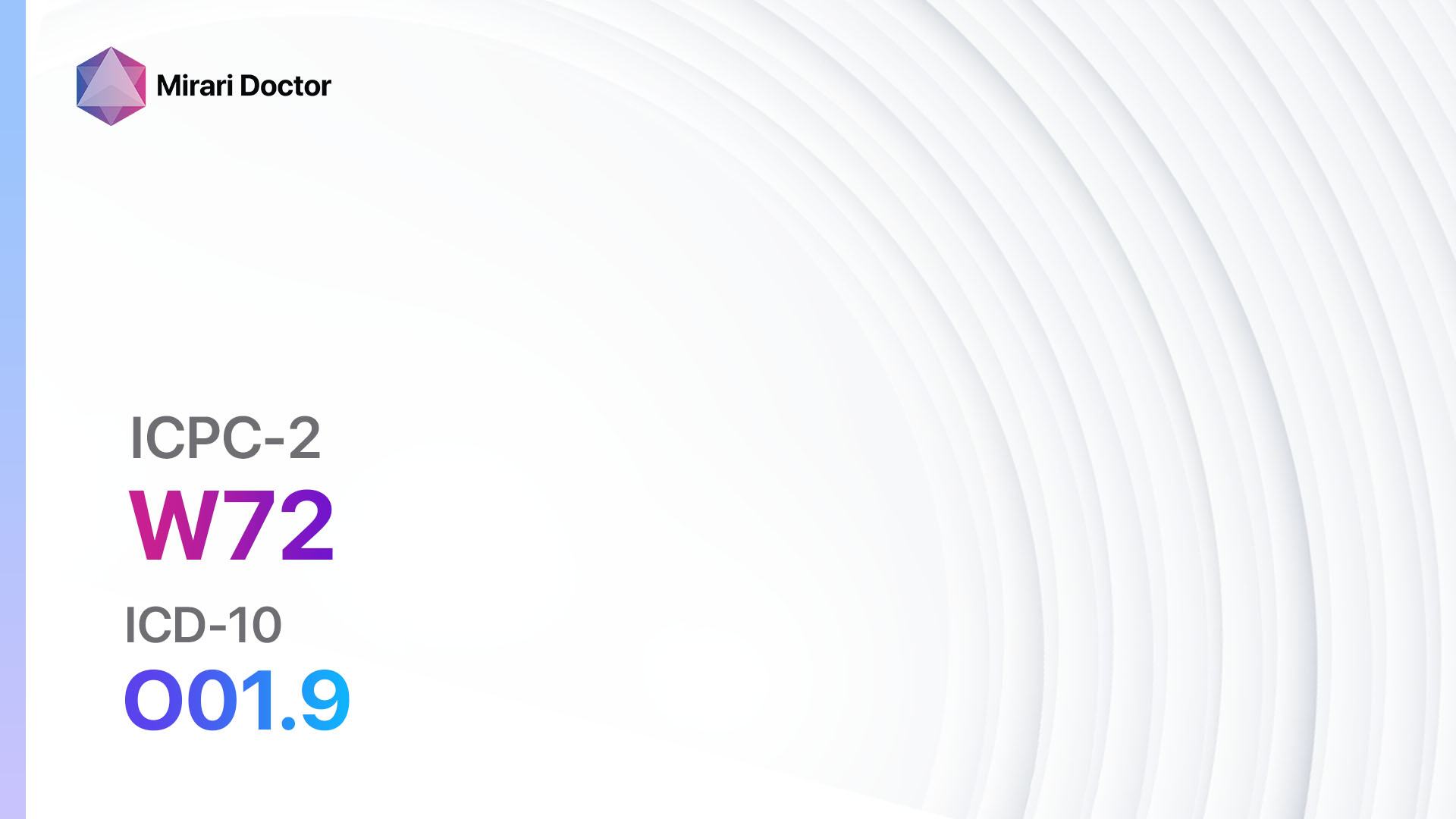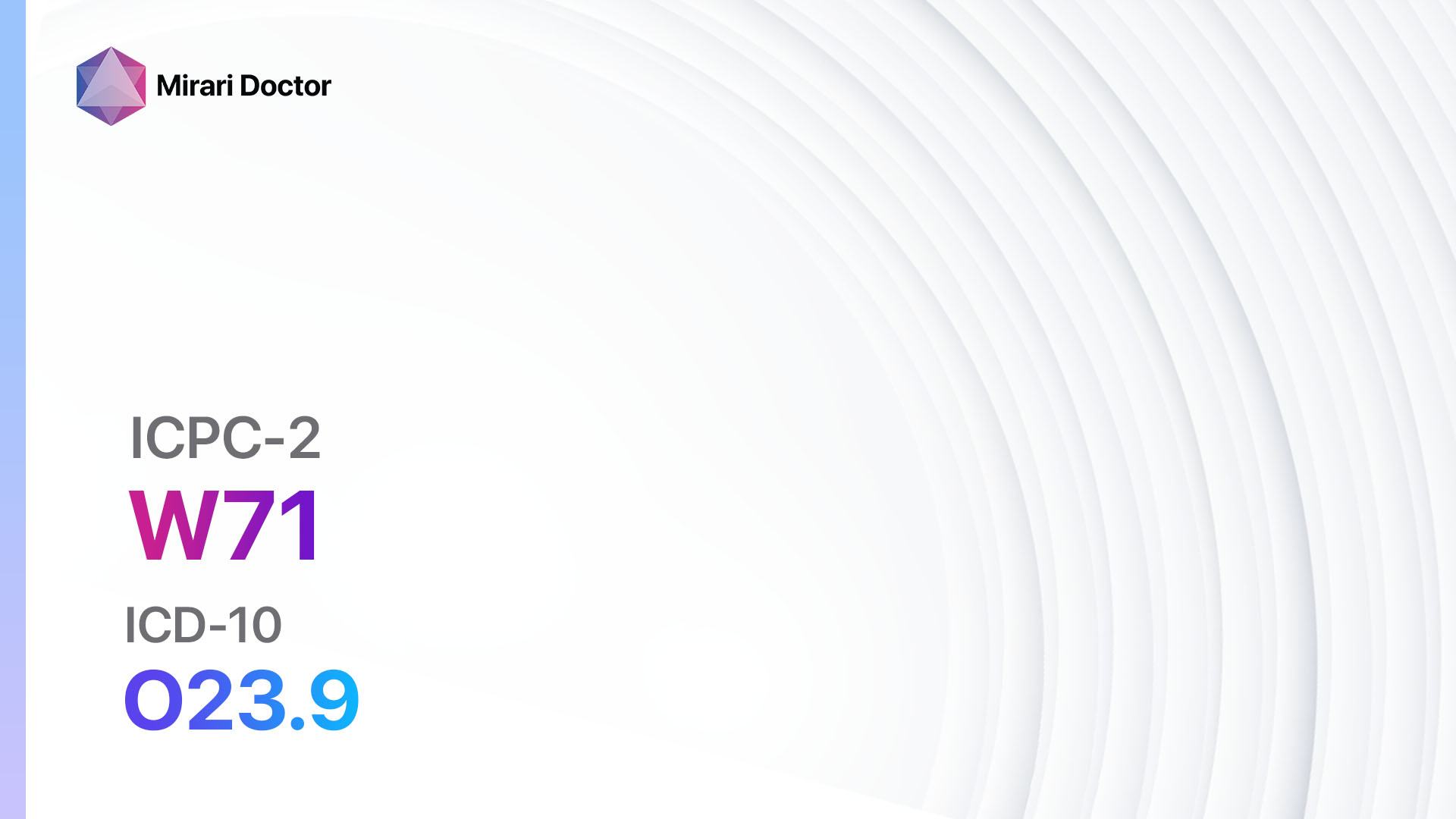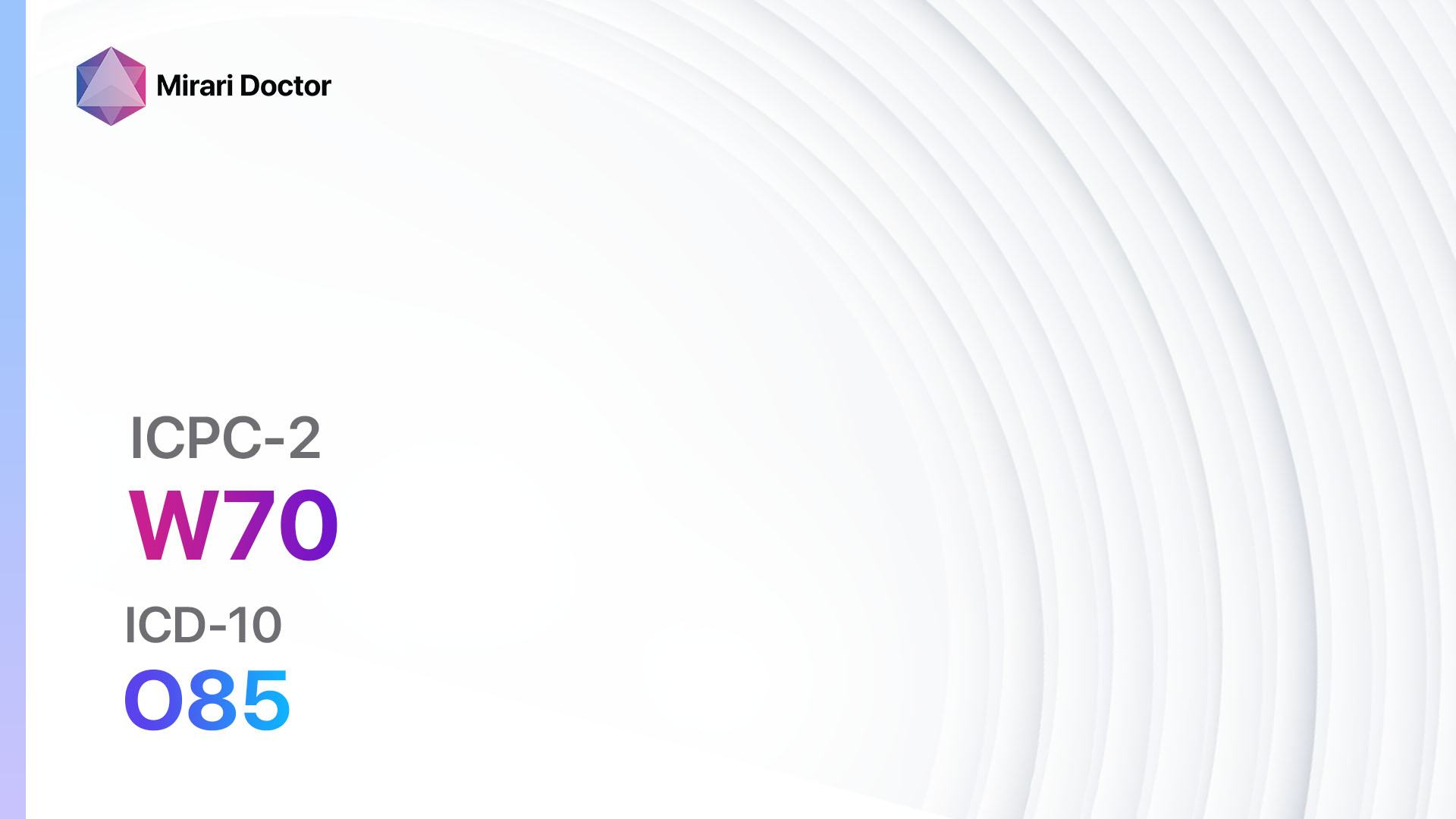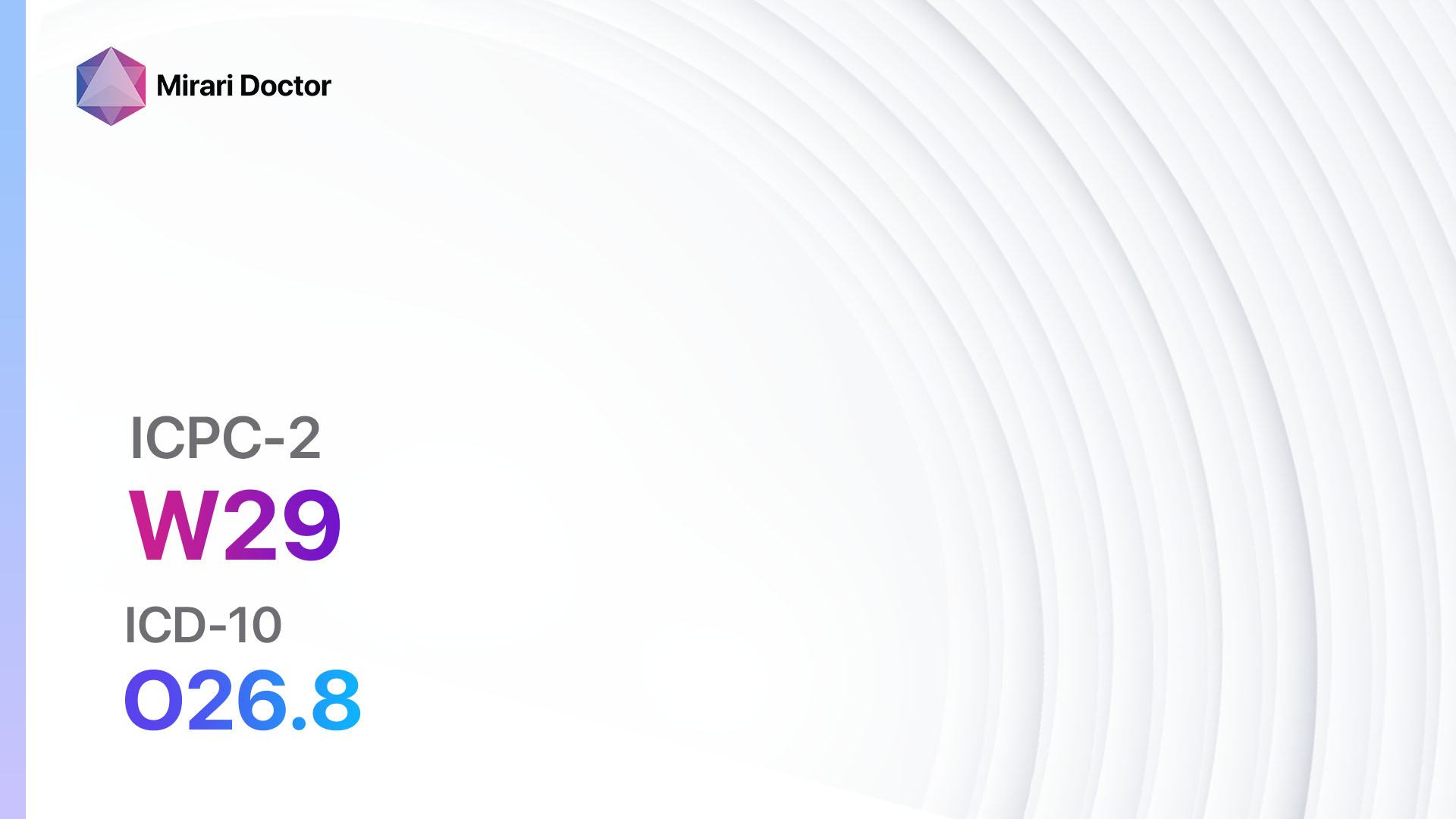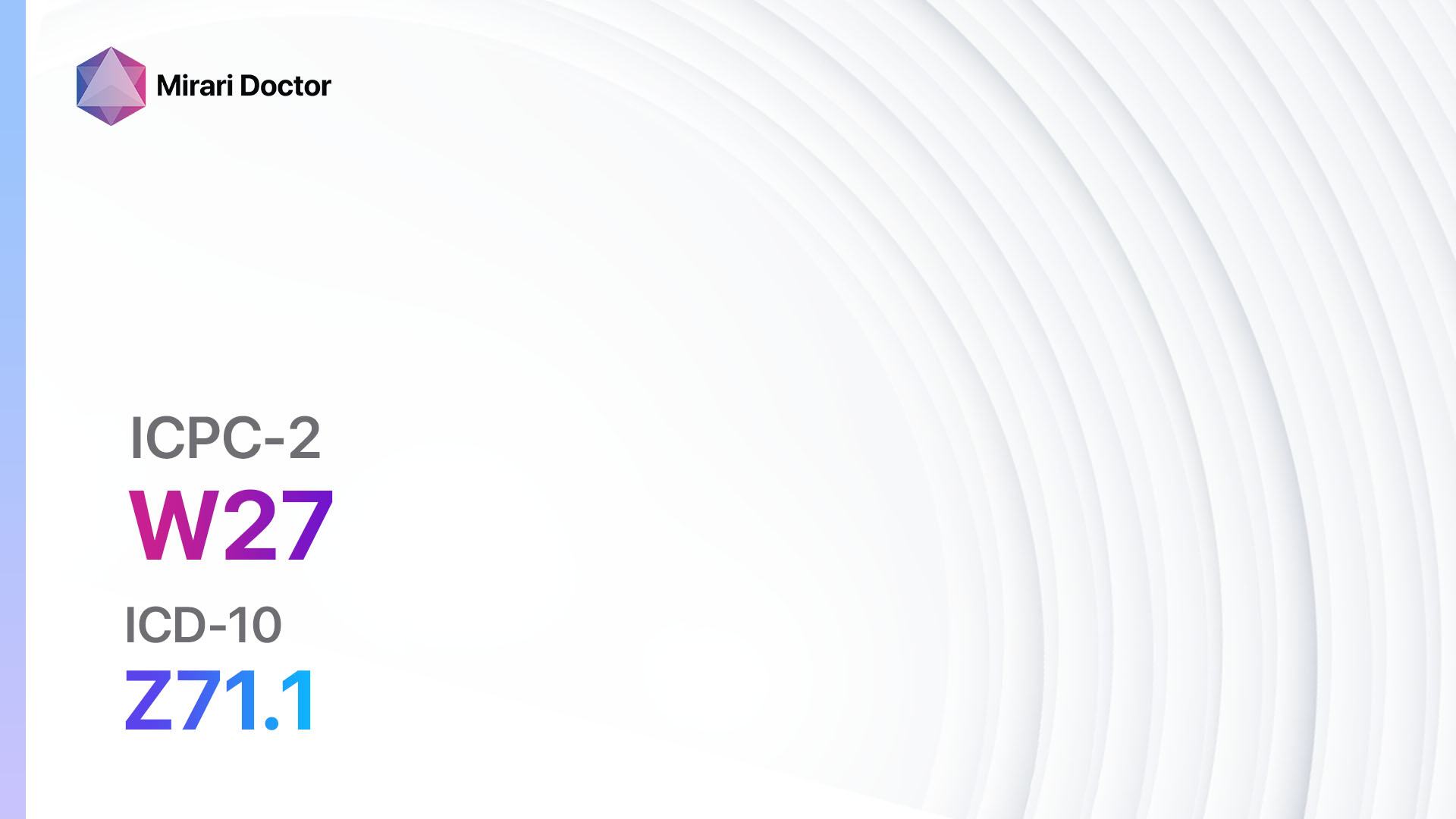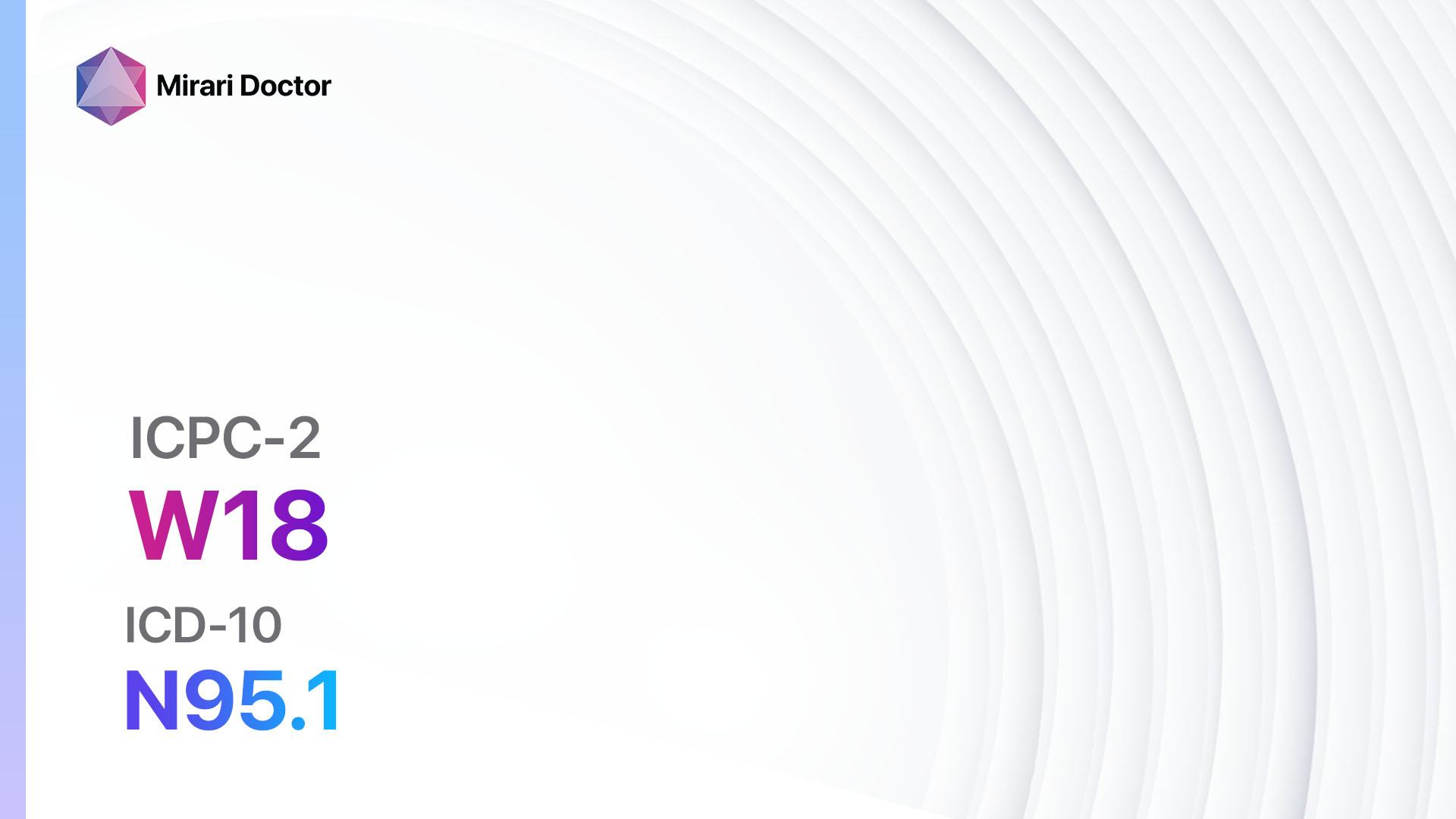
Introduction
Uncomplicated labour and delivery live refers to the process of childbirth without any significant complications or medical interventions. It is a natural and normal physiological process that typically occurs without any major issues[1]. The aim of this guide is to provide healthcare professionals with a comprehensive overview of the diagnosis, management, and possible interventions for uncomplicated labour and delivery live.
Codes
- ICPC-2 Code: W90 Uncomplicated labour/delivery live[2]
- ICD-10 Code: O80.0 Spontaneous vertex delivery[3]
Symptoms
- Regular contractions: Contractions that occur at regular intervals and increase in intensity over time.
- Rupture of membranes: Breaking of the amniotic sac, leading to the release of amniotic fluid.
- Cervical dilation: Gradual opening of the cervix to allow the passage of the baby[4].
Causes
- Onset of labor: The body’s natural process of preparing for childbirth, triggered by hormonal changes.
- Fetal descent: The downward movement of the baby through the birth canal.
- Cervical effacement: Thinning and softening of the cervix in preparation for delivery[5].
Diagnostic Steps
Medical History
- Gather information about the patient’s previous pregnancies and deliveries.
- Assess any risk factors that may affect the current labor and delivery.
- Inquire about any medical conditions or complications that may impact the process[6].
Physical Examination
- Perform a pelvic examination to assess cervical dilation, effacement, and fetal descent.
- Monitor vital signs, including blood pressure, heart rate, and temperature.
- Evaluate the position and presentation of the baby[7].
Laboratory Tests
- Perform a complete blood count (CBC) to assess hemoglobin levels and detect any signs of infection.
- Check blood type and Rh factor to determine the need for Rh immune globulin.
- Conduct a urinalysis to screen for urinary tract infections or other abnormalities[8].
Diagnostic Imaging
- Use ultrasound to assess fetal well-being, position, and presentation.
- Consider a fetal heart rate monitoring to evaluate the baby’s heart rate and detect any signs of distress[9].
Other Tests
- Conduct a non-stress test to assess fetal heart rate variability and reactivity.
- Consider an amniocentesis to assess lung maturity if there is a need for induction of labor[10].
Follow-up and Patient Education
- Schedule regular follow-up visits to monitor the progress of labor and ensure the well-being of both the mother and baby.
- Provide education on pain management techniques, breathing exercises, and relaxation techniques.
- Discuss the importance of proper nutrition, hydration, and rest during labor and delivery.
Possible Interventions
Traditional Interventions
Medications:
Top 5 drugs for Uncomplicated labour/delivery live:
- Oxytocin:
- Cost: Varies depending on the formulation and dosage. Typically ranges from $10-$100.
- Contraindications: Hypersensitivity to oxytocin, fetal distress, abnormal fetal presentation.
- Side effects: Uterine hyperstimulation, water intoxication, hypotension.
- Severe side effects: Uterine rupture, anaphylaxis.
- Drug interactions: Nonsteroidal anti-inflammatory drugs (NSAIDs), vasopressors.
- Warning: Continuous monitoring of maternal and fetal well-being is essential.
- Epidural anesthesia:
- Cost: Varies depending on the healthcare facility. Typically ranges from $500-$2000.
- Contraindications: Infection at the site of injection, bleeding disorders, allergy to local anesthetics.
- Side effects: Hypotension, headache, backache.
- Severe side effects: Epidural hematoma, respiratory depression.
- Drug interactions: None.
- Warning: Close monitoring of maternal blood pressure and fetal heart rate is necessary.
- Nitrous oxide:
- Cost: Varies depending on the healthcare facility. Typically ranges from $50-$200.
- Contraindications: Vitamin B12 deficiency, bowel obstruction, recent use of bleomycin.
- Side effects: Nausea, dizziness, drowsiness.
- Severe side effects: None reported.
- Drug interactions: None.
- Warning: Proper ventilation and oxygenation should be ensured during administration.
- Nonsteroidal anti-inflammatory drugs (NSAIDs):
- Cost: Varies depending on the specific NSAID and dosage. Typically ranges from $10-$50.
- Contraindications: History of peptic ulcer disease, renal impairment, bleeding disorders.
- Side effects: Gastric irritation, renal impairment, increased bleeding risk.
- Severe side effects: Gastrointestinal bleeding, acute kidney injury.
- Drug interactions: Anticoagulants, corticosteroids.
- Warning: NSAIDs should be used with caution in patients with cardiovascular disease.
- Antibiotics (e.g., Ampicillin, Clindamycin):
- Cost: Varies depending on the specific antibiotic and dosage. Typically ranges from $10-$50.
- Contraindications: Hypersensitivity to the antibiotic, history of severe allergic reactions.
- Side effects: Nausea, diarrhea, rash.
- Severe side effects: Severe allergic reactions, Clostridium difficile infection.
- Drug interactions: None.
- Warning: Antibiotics should be used judiciously to prevent the development of antibiotic resistance.
Alternative Drugs:
- Acetaminophen: Can be used for mild to moderate pain relief during labor. Cost: $5-$10.
- Hydroxyzine: Can be used for anxiety and sedation during labor. Cost: $10-$20.
- Promethazine: Can be used for nausea and vomiting during labor. Cost: $10-$20.
- Meperidine: Can be used for moderate to severe pain relief during labor. Cost: $10-$50.
- Butorphanol: Can be used for pain relief during labor. Cost: $10-$50.
Surgical Procedures:
- Cesarean section: Surgical delivery of the baby through an incision in the abdomen and uterus. Cost: $15,000 to $50,000.
- Episiotomy: Surgical incision made in the perineum to enlarge the vaginal opening during delivery. Cost: $500 to $2,000.
Alternative Interventions
- Water immersion: Immersion in warm water during labor can help with pain relief and relaxation. Cost: Varies depending on the facility. Typically ranges from $500-$2000.
- Hypnosis: The use of hypnosis techniques to manage pain and promote relaxation during labor. Cost: $500-$1000 for a hypnosis program.
- TENS (Transcutaneous Electrical Nerve Stimulation): The use of low-voltage electrical currents to provide pain relief during labor. Cost: $100-$300 for a TENS unit.
- Acupuncture: May help with pain relief and relaxation during labor. Cost: $60-$120 per session.
- Massage therapy: Can help with pain relief and relaxation during labor. Cost: $60-$120 per session.
Lifestyle Interventions
- Breathing techniques: Teaching proper breathing techniques can help manage pain and promote relaxation during labor. Cost: Varies depending on the childbirth education program. Typically ranges from $100-$500.
- Movement and positioning: Encouraging the mother to change positions and move during labor can help with pain relief and facilitate the progress of labor. Cost: None.
- Hydrotherapy: The use of water for pain relief and relaxation during labor. Cost: Varies depending on the facility. Typically ranges from $500-$2000.
- Birth ball: Sitting on a birth ball can help with pain relief and promote optimal fetal positioning during labor. Cost: $20-$50 for a birth ball.
- Doula support: The presence of a trained birth companion can provide emotional and physical support during labor. Cost: Varies depending on the doula’s fees. Typically ranges from $500-$2000.
It is important to note that the cost ranges provided are approximate and may vary depending on the location and availability of the interventions.
Mirari Cold Plasma Alternative Intervention
Understanding Mirari Cold Plasma
- Safe and Non-Invasive Treatment: Mirari Cold Plasma is a safe and non-invasive treatment option for various skin conditions. It does not require incisions, minimizing the risk of scarring, bleeding, or tissue damage.
- Efficient Extraction of Foreign Bodies: Mirari Cold Plasma facilitates the removal of foreign bodies from the skin by degrading and dissociating organic matter, allowing easier access and extraction.
- Pain Reduction and Comfort: Mirari Cold Plasma has a local analgesic effect, providing pain relief during the treatment, making it more comfortable for the patient.
- Reduced Risk of Infection: Mirari Cold Plasma has antimicrobial properties, effectively killing bacteria and reducing the risk of infection.
- Accelerated Healing and Minimal Scarring: Mirari Cold Plasma stimulates wound healing and tissue regeneration, reducing healing time and minimizing the formation of scars.
Mirari Cold Plasma Prescription
Video instructions for using Mirari Cold Plasma Device – W90 Uncomplicated labour/delivery live (ICD-10:O80.0)
| Mild | Moderate | Severe |
| Mode setting: 1 (Infection) Location: 2 (Prostate & Uterus) Morning: 15 minutes, Evening: 15 minutes |
Mode setting: 1 (Infection) Location: 2 (Prostate & Uterus) Morning: 30 minutes, Lunch: 30 minutes, Evening: 30 minutes |
Mode setting: 1 (Infection) Location: 2 (Prostate & Uterus) Morning: 30 minutes, Lunch: 30 minutes, Evening: 30 minutes |
| Mode setting: 2 (Wound Healing) Location: 2 (Prostate & Uterus) Morning: 15 minutes, Evening: 15 minutes |
Mode setting: 2 (Wound Healing) Location: 2 (Prostate & Uterus) Morning: 30 minutes, Lunch: 30 minutes, Evening: 30 minutes |
Mode setting: 2 (Wound Healing) Location: 2 (Prostate & Uterus) Morning: 30 minutes, Lunch: 30 minutes, Evening: 30 minutes |
| Total Morning: 30 minutes approx. $5 USD, Evening: 30 minutes approx. $5 USD |
Total Morning: 60 minutes approx. $10 USD, Lunch: 60 minutes approx. $10 USD, Evening: 60 minutes approx. $10 USD, |
Total Morning: 60 minutes approx. $10 USD, Lunch: 60 minutes approx. $10 USD, Evening: 60 minutes approx. $10 USD, |
| Usual treatment for 7-60 days approx. $70 USD – $600 USD | Usual treatment for 6-8 weeks approx. $1,260 USD – $1,680 USD |
Usual treatment for 3-6 months approx. $2,700 USD – $5,400 USD
|
 |
|
Use the Mirari Cold Plasma device to treat Uncomplicated labour/delivery live effectively.
WARNING: MIRARI COLD PLASMA IS DESIGNED FOR THE HUMAN BODY WITHOUT ANY ARTIFICIAL OR THIRD PARTY PRODUCTS. USE OF OTHER PRODUCTS IN COMBINATION WITH MIRARI COLD PLASMA MAY CAUSE UNPREDICTABLE EFFECTS, HARM OR INJURY. PLEASE CONSULT A MEDICAL PROFESSIONAL BEFORE COMBINING ANY OTHER PRODUCTS WITH USE OF MIRARI.
Step 1: Cleanse the Skin
- Start by cleaning the affected area of the skin with a gentle cleanser or mild soap and water. Gently pat the area dry with a clean towel.
Step 2: Prepare the Mirari Cold Plasma device
- Ensure that the Mirari Cold Plasma device is fully charged or has fresh batteries as per the manufacturer’s instructions. Make sure the device is clean and in good working condition.
- Switch on the Mirari device using the power button or by following the specific instructions provided with the device.
- Some Mirari devices may have adjustable settings for intensity or treatment duration. Follow the manufacturer’s instructions to select the appropriate settings based on your needs and the recommended guidelines.
Step 3: Apply the Device
- Place the Mirari device in direct contact with the affected area of the skin. Gently glide or hold the device over the skin surface, ensuring even coverage of the area experiencing.
- Slowly move the Mirari device in a circular motion or follow a specific pattern as indicated in the user manual. This helps ensure thorough treatment coverage.
Step 4: Monitor and Assess:
- Keep track of your progress and evaluate the effectiveness of the Mirari device in managing your Uncomplicated labour/delivery live. If you have any concerns or notice any adverse reactions, consult with your health care professional.
Note
This guide is for informational purposes only and should not replace the advice of a medical professional. Always consult with your healthcare provider or a qualified medical professional for personal advice, diagnosis, or treatment. Do not solely rely on the information presented here for decisions about your health. Use of this information is at your own risk. The authors of this guide, nor any associated entities or platforms, are not responsible for any potential adverse effects or outcomes based on the content.
Mirari Cold Plasma System Disclaimer
- Purpose: The Mirari Cold Plasma System is a Class 2 medical device designed for use by trained healthcare professionals. It is registered for use in Thailand and Vietnam. It is not intended for use outside of these locations.
- Informational Use: The content and information provided with the device are for educational and informational purposes only. They are not a substitute for professional medical advice or care.
- Variable Outcomes: While the device is approved for specific uses, individual outcomes can differ. We do not assert or guarantee specific medical outcomes.
- Consultation: Prior to utilizing the device or making decisions based on its content, it is essential to consult with a Certified Mirari Tele-Therapist and your medical healthcare provider regarding specific protocols.
- Liability: By using this device, users are acknowledging and accepting all potential risks. Neither the manufacturer nor the distributor will be held accountable for any adverse reactions, injuries, or damages stemming from its use.
- Geographical Availability: This device has received approval for designated purposes by the Thai and Vietnam FDA. As of now, outside of Thailand and Vietnam, the Mirari Cold Plasma System is not available for purchase or use.
References
- World Health Organization. (2018). WHO recommendations: Intrapartum care for a positive childbirth experience. Geneva: World Health Organization.
- WONCA International Classification Committee. (2005). ICPC-2: International Classification of Primary Care. Oxford University Press.
- World Health Organization. (2019). ICD-10: International Statistical Classification of Diseases and Related Health Problems, 10th Revision.
- American College of Obstetricians and Gynecologists. (2019). ACOG Practice Bulletin No. 205: Vaginal Birth After Cesarean Delivery. Obstetrics & Gynecology, 133(2), e110-e127.
- Cunningham, F. G., Leveno, K. J., Bloom, S. L., Spong, C. Y., Dashe, J. S., Hoffman, B. L., … & Sheffield, J. S. (2018). Williams Obstetrics, 25e. McGraw-Hill Education.
- National Institute for Health and Care Excellence. (2017). Intrapartum care for healthy women and babies. Clinical guideline [CG190].
- American Academy of Pediatrics & American College of Obstetricians and Gynecologists. (2017). Guidelines for Perinatal Care, 8th Edition. Elk Grove Village, IL: AAP; Washington, DC: ACOG.
- Lockwood, C. J., & Magriples, U. (2020). Prenatal care: Initial assessment. UpToDate. Retrieved from https://www.uptodate.com/contents/prenatal-care-initial-assessment
- Society for Maternal-Fetal Medicine. (2019). SMFM Consult Series #47: Fetal growth restriction. American Journal of Obstetrics and Gynecology, 221(4), B2-B19.
- American College of Obstetricians and Gynecologists. (2020). ACOG Practice Bulletin No. 217: Prelabor Rupture of Membranes. Obstetrics & Gynecology, 135(3), e80-e97.
Related articles
Made in USA


